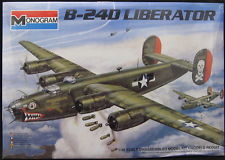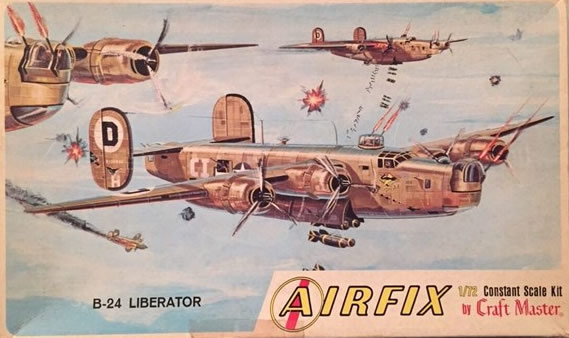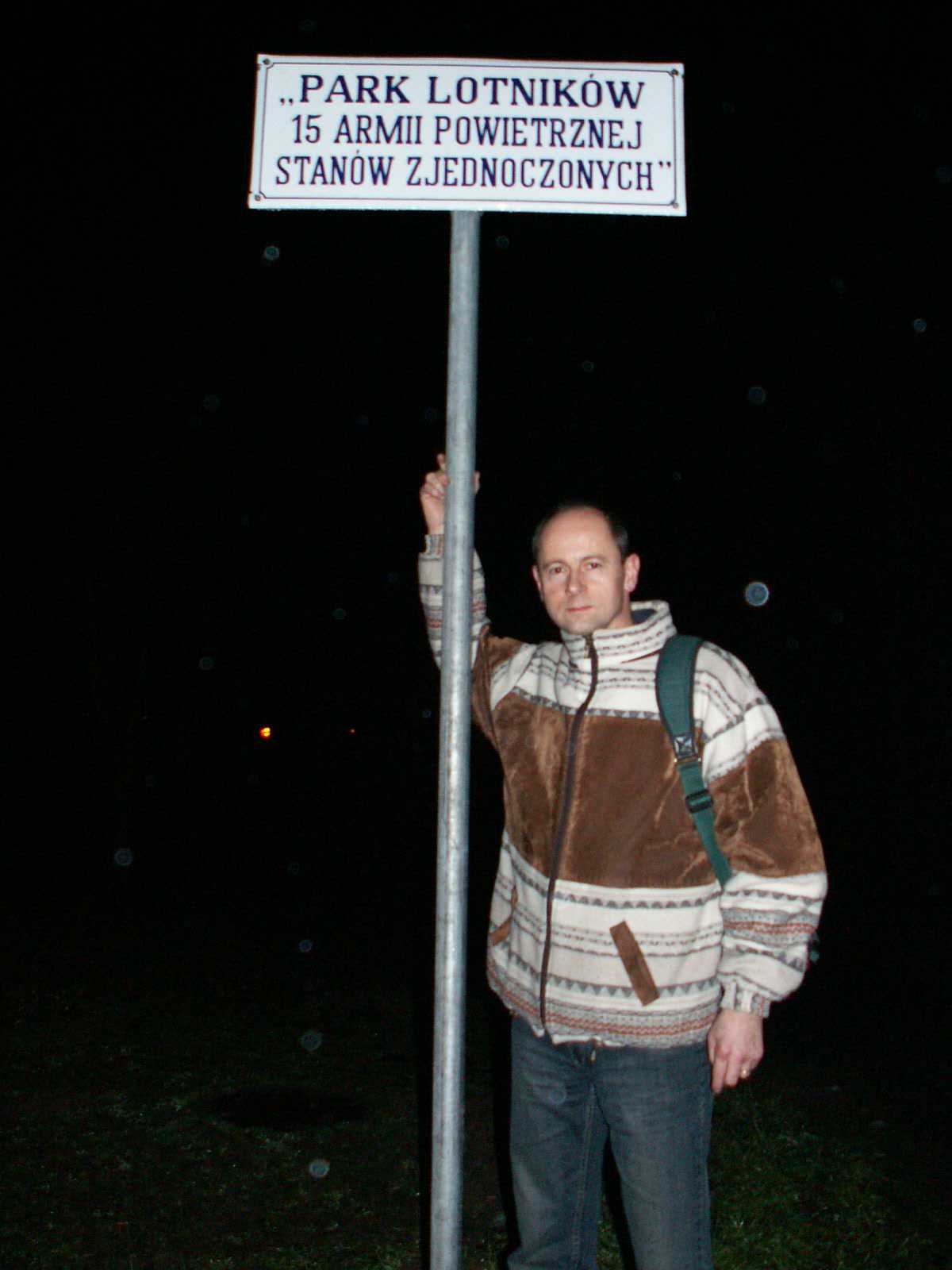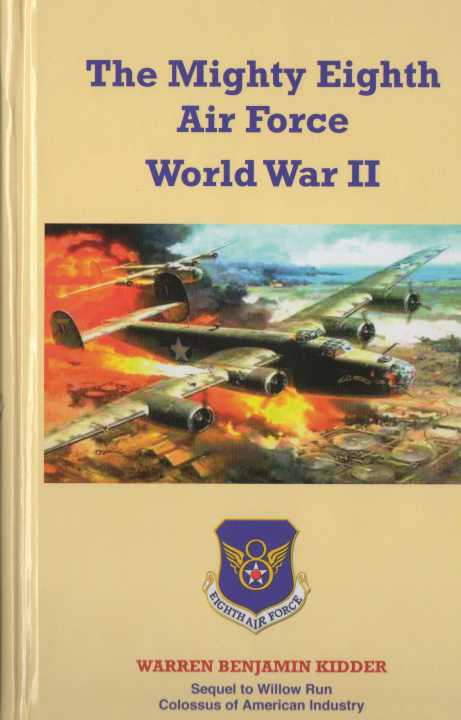 |
|
|
WW2 B-24 Liberator Bomber Models, B-24 Models, Airplane Kits.

B-24 ModelsLiberator WW2 Bomber Models Department.
in the YellowAirplane store.
|
WW2 B-24 Liberator Bomber Models, B-24 Models, Airplane Kits. |
||
 |
You
are in the
B-24 ModelsLiberator WW2 Bomber Models Department. in the YellowAirplane store. |
Consolidated B-24 Models, airplane models, B-24 plastic model kit, mahogany models, die cast models and WW2 B-24 Bomber Pictures.Consolidated B-24 Guerra Mundial Libertador dos bombarderos de h?ice, modelos de aviones, B-24 kit modelo de pl?tico, los modelos de caoba, mueren los modelos de reparto y 2 ? Guerra Mundial B-24 Fotos del bombardero. The B-24 Liberator was built in a factory called Willow Run in Detroit Michigan. The factory was built by Henry Ford and designed by Charles E. Sorensen. The Willow Run factory was named willow run because is it was built on the willow run creek. This is interesting because the last person to live on the Willow Run property was Warren Benjamin Kidder. I have spoken to Ben, personally, and he is one of the nicest people that anyone could ever meet. Ben wrote a book called Willow Run, Colossus of Industry, a book about the production of the B-24 liberator military bomber. When the factory was in full production it produced a B-24 liberator every 56 minutes. This factory is one of Henry Ford 's greatest achievements. You can read more about this fantastic, very well written book by ing here.This famous WWII bomber fought its way through the dangerous skies of Europe and the Pacific. The B-24 Liberator was one of the most versatile and important aircraft of that era. It did not get the press attention that the Flying Fortress received, but it certainly earned its way by fighting through swarms of Luftwaffe fighters to drop bombs on the Third Reich. It earned the same laurels in the Pacific. B-24 Liberator Movies B-24 Liberator Aviation Art B-24 Liberator Models B-24 Liberator Books 1/72 B-24 Models |
|
|
| Jet Fighters | WWII Fighters | WWI Fighters | Guitars | Ships | Spacecraft | Tanks |
Click Here to fly in a Real Russian MiG Jet Fighter
Survival Equipment - Survival Supplies
Consolidated, B-24 Models.
|
|
|
Commissioned to replace the B-17, the Liberator was built in near-record time. The machine was designed around the long-span low-drag Davis wing, a new concept at the time of production. Early models were soon superseded on all production lines by the J model, the most successful B-24 of all time. When production ceased on 31 May 1945, 18,475 Liberators had been made, making it the most produced American aircraft of WW2. Look at the Willow Run WW2 B-24 Liberator Bomber Exhibit Here See the Mighty Eighth Air Force World War II Exhibit Here. See the New Eight Air Force WW2 Movie Script Here. |
|
|
|
B-24 Liberator Bomber Everything |
PB4Y-1 & PB4Y-2 Models
The Army proposed that the Navy cancel the Sea Ranger program and turn over the Renton factory to them for B-29 production. In exchange, the USAAF would get out of the antisubmarine warfare business and would drop its objections to the Navy's operation of land-based bombers. The Navy would get "navalized" B-24 Liberators, B-25 Mitchells, and B-34/B-37 Venturas for use in maritime reconnaissance and antisubmarine warfare. The Navy readily agreed to this arrangement. The navalized Liberator was assigned the designation PB4Y-1. The initial PB4Y-1s were essentially B-24Ds delivered to the Navy with very little change and assigned Navy Bureau of Aeronautics serial numbers. They were drawn from a variety of B-24D block numbers. Later Navy Liberators were based on the B-24G, J, L, and M versions, with their factory-installed Consolidated A-6A/B or Emerson A-15 nose turrets, although some of them had ERCO turrets installed at the factory. However, they retained the same naval designation of PB4Y-1 as the initial planes based on the B-24D. All PB4Y-1s had Martin A-3 upper turrets and Consolidated A-6A/B tail turrets. In service, several B-24D-based PB4Y-1s were retrofitted with ERCO (Engineering and Research Company) ball turrets in their noses. This ball turret had originally been designed for the now-cancelled Boeing XPBB-1 Sea Ranger patrol bomber. The ERCO ball turret was essentially spherical whereas the earlier Consolidated or Emerson turrets were essentially cylindrical. |
|
|
B-24J
Liberator 1/72 Model
|
|
B-24
Liberator Balsa Wood Kit
|
|
| B-24J Liberator 1/72 Scale Model Plane Pre Built Mahogany Display Model Plane Silver Made of Philippine mahogany, this 1/72 scale model measures 12" in length and has a wingspan of 18?". Hand painted and detailed, model comes ready to display on the included mahogany base. |
|
|
B-24J
Liberator 1/72 Model
|
|
B-24J Liberator 1/72 Scale Model Kit Sporting authentically detailed markings, this 1/72 scale plastic kit of the B-24J, The Dragon and his Tail is a fine replica. The detailed kit features a realistic interior and armaments that can be displayed either open or closed. Assembled kit has an impressive 18" wingspan. |
|
B-24D Liberator 1/72 Scale Kit The Squaw, a B-24D Liberator heavy bomber piloted by Capt. Royden Lebrect of the 98th Bomb Group - the "Pyramiders" - on the August 1, 1943, Ploesti low-level raid (Operation Tidal Wave), this newly tooled, 1/72 scale plastic kit features a detailed cockpit, ball turret and glazed nose; optional-position bomb bay doors and eight 1,000-lb. bombs; intricate landing gear; authentic USAAF markings; and more. 18?" wingspan; 207 parts, assembly required. |
|
|
B-24D
Liberator 1/72 Kit
|
|
B-24J Liberator 1/62 Scale Model |
|
Flight
Manual B-24 Liberator
A reprint of the official government handbook designed to show the new cadet how to fly the aircraft. Heavily illustrated with dozens of photos, diagrams and charts. 146 pgs., 8½"x 11", sfbd. |
|

B-24 Liberator Movies B-24 Liberator Aviation Art B-24 Liberator ModelsB-24 Liberator Books
|
|
|
|
|
|
|
|
|
4-16-2009 Dear Jerry, Thank you for you letter and the "Lightweight Tower Calling" bulletin. I'm glad that you feel fine now.  I'd
like to inform you about the event we are organizing in September this year. On
9/11 the park in Blechhammer will be given the name of 15th U.S.A.A.F. Airmen.
We have invited the American air attach?in Poland, colonel Mary E. Peterson. We
already have the plates with the name of the park (I'm sending you a photo). Me
and my friends from the "Blechhammer - 44" group have applied for this to the
local authorities. We are also trying to raise money for a memorial plate
with the names of 14 airmen killed in battle who are still buried in the Polish
soil somewhere around Heydebreck, Odertal and Blechhammer. 10 of them were from
485 BG. We are not sure how this project will be financed and I think that we
will ask the attach?for help. I will send you the list of I'd
like to inform you about the event we are organizing in September this year. On
9/11 the park in Blechhammer will be given the name of 15th U.S.A.A.F. Airmen.
We have invited the American air attach?in Poland, colonel Mary E. Peterson. We
already have the plates with the name of the park (I'm sending you a photo). Me
and my friends from the "Blechhammer - 44" group have applied for this to the
local authorities. We are also trying to raise money for a memorial plate
with the names of 14 airmen killed in battle who are still buried in the Polish
soil somewhere around Heydebreck, Odertal and Blechhammer. 10 of them were from
485 BG. We are not sure how this project will be financed and I think that we
will ask the attach?for help. I will send you the list of names of those airmen. Perhaps you could spread the word to their families? I noticed in your bulletin how much you care for keeping in touch with people and preserving the memory about history. Perhaps somebody would like to come and participate in the September celebration? I'm also sending some photos of a B24 model. It is the plane of Lt. Arthur Lindell and it will be displayed in our museum; it was made by my friend Andrzej Cholewa. I wish you a blessed and joyful Easter and a spring full of new opportunities and warm days! I hope you will spend a great time with your family and friends. Waldemar Hi John, I thought your C-130 buddy who is going to Poland might be interested in this upcoming event in Poland. I'm putting Waldemar's email below. He was my tour guide when I was there, at no charge, and spent 2 days with me showing me 15th AF crash sites, the museum, the refineries, etc. I'm sure he'd do the same for any good American. The uniform in the attached photo is one I donated to their museum. In his email he references Lt. Lindell's crew. They went down on 12/26/44. JerryInformation Thanks to John Bybee, B-24 Master Researcher. |
|
|
|
Above the Ardennes on December 31, 1944, Oblt. Hans Dortenmann - Staffelkapitan of 12./JG 54, the Green Hearts - leads a formation of 30 Fw 190D fighters in an attack on 2nd Air Division B-24 Liberators. The Little Gramper, the first forming plane used by the 491st Bomb Group The Squaw, a Liberator of the 98th Bomb Group piloted by Royden L. Lebrect on the Ploesti Raids. Known as The Dragon and His Tail, this B-24 - which flew 85 missions with the 43rd Bomb Group at le Shima, a small island just west of Okinawa Spotted Ape - a brightly colored B-24 Liberator assembly ship which was used as a reference point to set up huge bomber formations - of the 458th Bomb Group based at RAF Horsham St. Faith The B-24 Liberator was built in greater quantities than any other U.S. bomber of World War 2. The prototype model was produced by the Consolidated Aircraft Corp. with the first XB-24 taking to the air on Dec. 29, 1939. It featured the revolutionary Davis wing design that enabled the B-24 to carry the same payload as its rival the Boeing B-17 Flying Fortress but at a much greater speed and range. Over 18,000 Liberators were built during the war. Of all the European operations in which B-24s were involved, the initial raid on the Ploesti oil refinery in southern Rumania on Aug. 1, 1943 was by far the most dramatic because it was heavily defended by anti-aircraft guns as well as squadrons of German Luftwaffe and Royal Rumanian Air Force Fighters. Of the 164 B-24s engaged, 53 were shot down or lost enroute, 23 were forced down and only 88 returned to base. “Jerk’s Natural”, the subject of this kit, was a Ploesti bomb group survivor. Queen Mae, a B-24J Liberator that operated with the 90th Bomb Group - the Jolly Rogers - in the Pacific Theater during World War II Known as The Dragon and His Tail, this B-24 - which flew 85 missions with the 43rd Bomb Group at le Shima in the Pacific - is widely recognized for its colorful crew insignia. The only flyable B-24 Liberator aircraft in the world, serial number 44-44052, is the aircraft owned and operated by the Collings Foundation, and named after The Dragon and His Tail, this lavishly decorated B-24 that flew in the Pacific during WWII. Restored in 1985, this Liberator required over 420,000 new rivets and more than 80% of the aircraft's parts were rebuilt or replaced. The Squaw, a B-24D Liberator heavy bomber piloted by Capt. Royden Lebrect of the 98th Bomb Group - the "Pyramiders" - on the August 1, 1943, Ploesti low-level raid (Operation Tidal Wave) "Strawberry Bitch," 376th Bomb Group PB4Y-1 Liberator Flown on anti-submarine patrol missions, the U.S. Navy's version of the B-24 bomber Easy Maid the PB4Y-1 patrol bomber, which was a Naval adaptation of the famous Consolidated B-24J Liberator B-24H the 459th Bomb Group, which flew with the 15th Air Force out of Italy in 1944 "Jerk's Natural," a Ploesti survivor B-24D Liberator, a heavy bomber that was produced in greater numbers than any other American combat aircraft during World War II Consolidated B-24J Liberator of the 376th Bombardment Group based in North Africa during World War II the B-24J Liberator "Silver Chief", with markings of the 753rd BS/458th BG Above the Ardennes on December 31, 1944, Oblt. Hans Dortenmann - Staffelkapitan of 12./JG 54, the Green Hearts - leads a formation of 30 Fw 190D fighters in an attack on 2nd Air Division B-24 Liberators B-24s from the 23rd Bomb Group, escorted by P-51s from the 356th Fighter Group (led by Jersey Jerk, fly among the columns of Thor (the Norse god of thunder and war) as they return from their targets in Germany Protecting B-24 Liberators returning from a bomb run, an F4U Corsair from VF-17, the "Jolly Rogers," races past a Japanese Zero - whose pilot is bailing out - it just shot out of the sky over the South Pacific B-24Ds of the American pioneer 93rd Bomb Group climb through 21,000 feet into the light of the early morning sun. On this day, March 18, 1943, the B-24Ds, joined by B-17s and other bombers, crossed the East Coast of England en route to their target, the submarine base at Vegesack, Germany. This first mission to Germany for the 93rd Bomb Group proved that daylight bombing could be carried out successfully in the face of German defenses. a photograph taken during the August 1, 1943, low-level raid on Germany's oil refineries in Ploesti, Romania, is signed by Col. Walter Stewart who, as deputy lead of the 93rd Bomb Group on this mission and pilot of the only first-wave B-24 to survive the attack, received the Distinguished Service Cross. The Vulgar Virgin, a B-24 Liberator of the 344th Squadron, 98th Bombardment Group (H), makes its fatal run over target "White IV," Ploesti, before being lost to flak and enemy fighters. Safely back at their base in Salbani, India, the crew of this 355 Squadron, Royal Air Force, Liberator tells of their just-completed harrowing mission. On August 1, 1943, 178 Liberators made a famous low-level bombing raid on the oil refineries at Ploesti, Rumania. This scene shows John R. "Killer" Kane's B-24 named Hail Columbia and another Pyramidier B-24, The Squaw, making their attack through the thick smoke over the target B-24J from the 389th Bomb Group, which was based at Hethel, England during World War II, can now be enjoyed by all at the Fantasy of Flight Museum in Polk City, Florida The magnificent Liberator flies with the Collings Foundation. Beautifully photographed by Patrick Bunce, B-24D Liberators of the 93rd Bomb Group, this print showcases Joisey Bounce, a Liberator that flew with the 330th Bomb Squadron and survived the low-level raids on Ploesti, Romania. Accompanying her are Thundermug and Boomerang, both of the 328th. 1st Lt. Carl H. Fritsche brings his B-24 Liberator, The Crusader, into a valley in the Himalayas. Unable to fly above this high mountain range with the limited service ceiling of a fully loaded B-24, Fritsche relied on his navigator's skill to successfully guide his aircraft on 48 missions carrying fuel "over the Hump" into China from India in 1944. Barely clearing the smokestacks of the oil refineries at Ploesti, Romania, this B-24 Liberator, "Sandman," was one of more than 100 that participated in Operation Tidal Wave - the low-level raid of August 1, 1943. A PB4Y-2 Privateer - a reconfigured B-24 Liberator with a lengthened fuselage, greater defensive armament, modified engine cowlings and a distinctive, single vertical tail - of VPB-106 flies over the Pacific Fleet near its island base in the Philippines in the spring of 1945 B-24s of the 44th and 98th Bomb Groups exit the target at extreme low level after turning the oil refineries at Ploesti into a fiery maelstrom. On November 2, 1944, B-24s of the 489th BG were sent to destroy the railroad marshalling yards at Bielefeld, Germany. The bomber formation was surprised to encounter the new German jet fighters, the Messerschmitt Me-262, in one of the earliest jet attacks against U.S. heavy bombers. The jets were chased off by P-47s that were escorting the bombers and there were no losses. The exhausted crew of the B-24 Utah Man has returned to base near Benghazi, Libya on August 1, 1943 after bombing the great oil refineries at Ploesti. Base personnel welcome back the crew as pilot 1st Lt. Walter T. Stewart describes the mission to operations officer Maj. Ramsay D. Potts. Closing at high speed with all cannons blazing, the distinctive Fw 190A-8 "Black 8" flown by Unteroffizier Willi Maximowitz dives in to attack a formation of USAAF B-24s from the 93rd Bomb Group over Germany. Badly damaged by flak, Hell's Wench - a B-24 Liberator flown by Lt. Col. Addison Baker, commander of the 93rd Bomb Group - continues toward its target during the daring low-level attack on the Ploesti oil refineries on August 1, 1943. Hell's Wench crashed shortly after releasing its bomb load, killing all of its crew. Above the Ardennes on December 31, 1944, Oblt. Hans Dortenmann - Staffelkapitan of 12./JG 54, the Green Hearts - leads a formation of 30 Fw 190D fighters in an attack on 2nd Air Division B-24 Liberators. The jet-powered Me 262 fighter was fast and could easily outrun Allied fighters. Unfortunately from the German perspective, it arrived on the scene too late and in too few numbers to impact the outcome of the war. Here we see it attacking a late-model B-24 in 1945. |
|
There was a problem
called the lift gap problem which talked about the rotation of the heavy wheels,
just after take off and putting the gear up, causing a gyro torque that pushed
the nose of the aircraft down, which may have caused many of the aircrafts
takeoff crashes. 9-5-2009 However, one generous B-17 pilot, and a B-24 pilot both said the B-24 was a handful. It was an entirely different aircraft yet it had a special set of unusual problems. Too many short-cuts in design and construction and unfortunately the short-cuts were so basic that they could not be changed short of scrapping the whole concept of the B-24. Ever notice that B-17's flew long after WWII in great variety of service? Ever see a B-24 after the war flying the same missions? I'll bet a Russian take-off in a B-24 was a wild ride, with a Russian cowboy at the controls. I hope they were wearing clean diapers! John Bybee.9-6-2009 |
|
B-24 Exhibits on this Site |
|
|
Willow
Run The History of the Development of the B-24 Liberator Bomber
The exciting story
of building the B-24 Liberator
By Warren Benjamin
Kidder. |
 |
|
A Journey from Childhood
to War By Jesse Pettey. |
|
 The Mighty Eighth Air Force World War II The latest book by Warren Benjamin Kidder. This book starts out with action then talks about Charles Sorenson's building of the B-24 Liberator Factory at Willow Run. Next it goes into America's entry into World War II and shows the daring raids of Jimmy Doolittle and quickly moves into the intense action of the B-24 Liberators raiding the oil refineries in Ploesti Romania. The last part of this book is a complete listing of almost one thousand raids of the 8th Air Force in WW2. This is a color edition, hardcover edition, hand signed by the author, Warren Benjamin Kidder. This book is action packed from beginning to end and is a non fiction account of what it really took to win the war both here in the United States and on the battle ground. You need to read this book. Click Here's Warren Benjamin Kidders New Book, The Mighty Eighth Air Force Click Here's the Movie Script for Willow Run Willow Run, The History of the Development of the B-24 Liberator Bomber Exhibit |
Click Here
to see the Script Release for
"Willow
Run The Eighth Air Force WW2 Movie"
|
Click Here to see more letters from other military members and their families |
| 8-15-2008 Hi Jeff-Just now whittled out some time to mail you with a little info ( for now ) gained from our Getty Family Reunion last weekend. I wrote you just before we left for Lake Pleasant, NY. I'll fill you in more later, but wanted to send two pix you and Mr. DeVillers might find interesting. Both in one .jpeg, 1st on top is my uncle, Capt. C.R. (Charles Robert) Getty on the right and Bombadier (Ernest Robert DeVillers) on the left. Bottom photo is, of course the G.K.II and GROUND CREW. C.R. is working on remembering their names. That's all for now, hope it adds to your quest. Brian Gough |
| The Jesse Pettey B-24 Pilot ExhibitAt that moment I forgot about the fighter escort and adjusted my comforting flak helmet and vest. The top turret guns began to chatter as the flight engineer fired at an approaching enemy BF-109. An instant later he was joined by the rattle of the right waist guns. We were engaged in the bomb run and unable to maneuver our airplane to evade the fighters: we could only fly in a stable flight path in the direction of the target so that the bomb load could, at the correct moment, direction, altitude and speed, be released. We were sitting targets for both anti-aircraft guns and enemy fighters. The next moment I witnessed and event that made me ill. A German FW-190 suddenly appeared from below the nose of our aircraft and with in a few seconds, released two rockets into a B-24 ahead of us. He then rolled upside down and disappeared in a dive underneath our airplane. It occurred so suddenly, our gunners had insufficient time to react or to fire. I could distinguish the German pilot as he rolled over because he appeared only a few yards ahead of the nose of our airplane. I could distinguish the German pilot as he rolled over because he appeared only a few yards ahead of the nose of our airplane. Instantly, the B-24 ahead exploded into a fireball and began a downward spiral. Only a few parachutes opened underneath the revolving inferno but even more terrifying, some of the parachutes and clothing of the airmen were on fire. Read the whole story here |
| 9-5-01Jeff, My Dad was one of
the first " Bombagators " in the Army Air Corps in WWII . He received
the distinguished Flying cross for leading a mission
over Germany during the war in a
B-24 Liberator Bomber
. The name
of the plane was Galloping Katie two . Dad was Ernest
Robert DeVillers . The pilot was J. Paul Getty . If you can set me
up in any search areas , it would be greatly appreciated. Dad
wrote a mission letter for every mission he flew but destroyed
them just a few years ago . I have two that weren't in his possession
along with his graduation book from San Angelo Army Air Field in San
Angelo, Texas. If any of what I have can be of use to you or others interested in this history , Thanks Jeff Frank DeVillers This
is Very Important. I need your help. |
| Dear Sir: I was the Co-Pilot
on the "Gremlin". We were the only crew to fly #427512. On
5 January 1944 we were shot down by three German fighters over Friedrichskoog, Germany. I bailed out just a few seconds before the
Gremlin blew up and 6 crewmen were KIA. A 15 year old German viewed
this event and saw a piece of the Gremlin fall through their barn
roof and kill a horse. This German saw a recent posting about
our plane and wrote to me that he had plowed up a piece of the Gremlin.
He sent this piece to me. It looks to be a part of the engine
and bears identification : #9901 AND #108F23. I would like
to have this part identified. I have a picture that I could send
by attachment. I am also interested to know if any quality control
studies were made
to compare the quality of the B-24's
made at the various manufacturing plants. The Gremlin had problems
with the superchargers from the very first day we were assigned as
its crew. In fact we were alone on the day we were shot down as a
result of being unable to keep up with the formation because the superchargers
refused to operate as needed at high altitude. I am interest to know
if any comparative studies were made relative to such problems between
the various manufacturing plants. Also I would like to have a copy
of any manufacturing data that may exist for #427512.
Thank you for any assistance you may provide. William T. (Bill) bminor@truman.edu |
( B-24 Liberator Aircraft Art ) ( B-24 Liberator Videos ) ( B-24 Liberator Books )
Other B-24 Liberator References
Archival Collections of the 2nd Air Division, 289th Bomb Group, Memorial Library
Click Here
for the Willow Run Exhibit, Production of the B-24 Liberator,
by Warren
B. Kidder
| .
|
|
Look at the All New B-24 Liberator Models A tremendous collection of WW2 B-24 Liberator Models and Aviation Art. The B-24 Liberator was the most produced bomber in World War 2. Also included are many new B-24 Liberator Exhibits showing this bomber from production to completion and many missions in between. the link above to see the whole works. |
Here for a list of WW2 Fighter Groups
Click Here to go to the YellowAirplane Online Museum
Look at these exhibits and tell me what these men really fought for.
The 34th Fighter SquadronThe 34th fighter Squadron
WW2 Exhibit
USS Kitty Hawk Aircraft Carrier Exhibit.
About the Webmaster, Why God Send Me to the North Pole
Click here to see how I have to live and what it looks like to be
a disabled Vet.
Models_Bombers/airplane_models_B-24.html|32178"
12-7-2008 11-28-2011
| . |